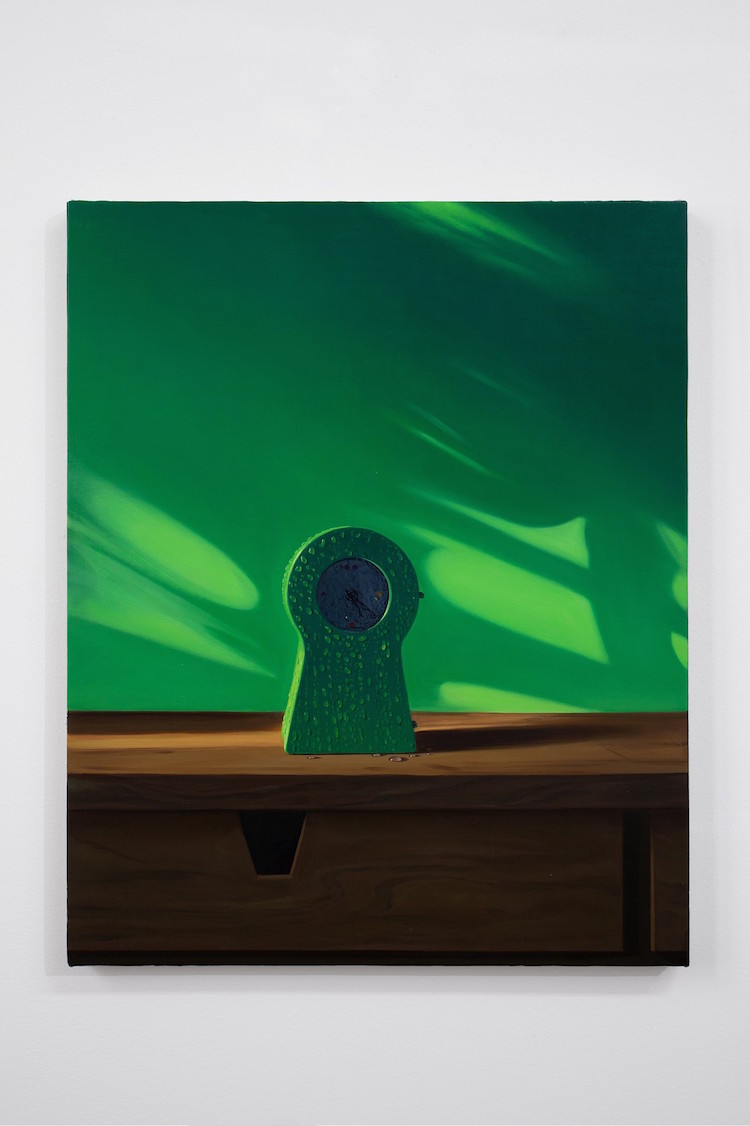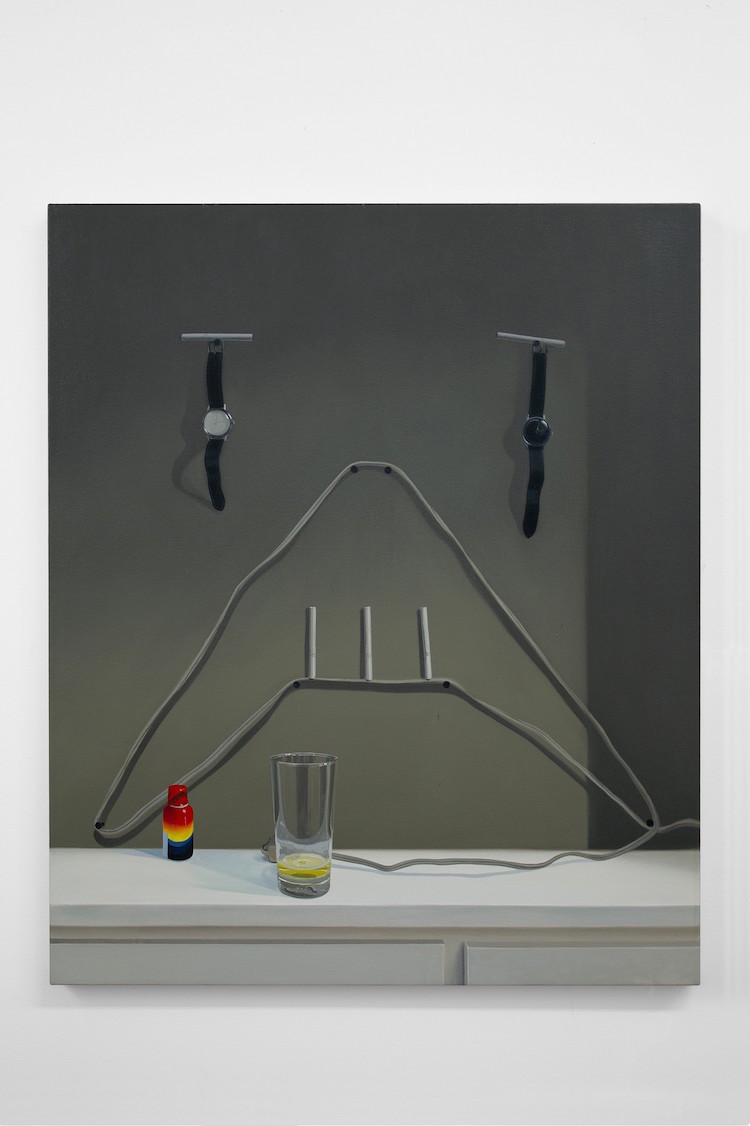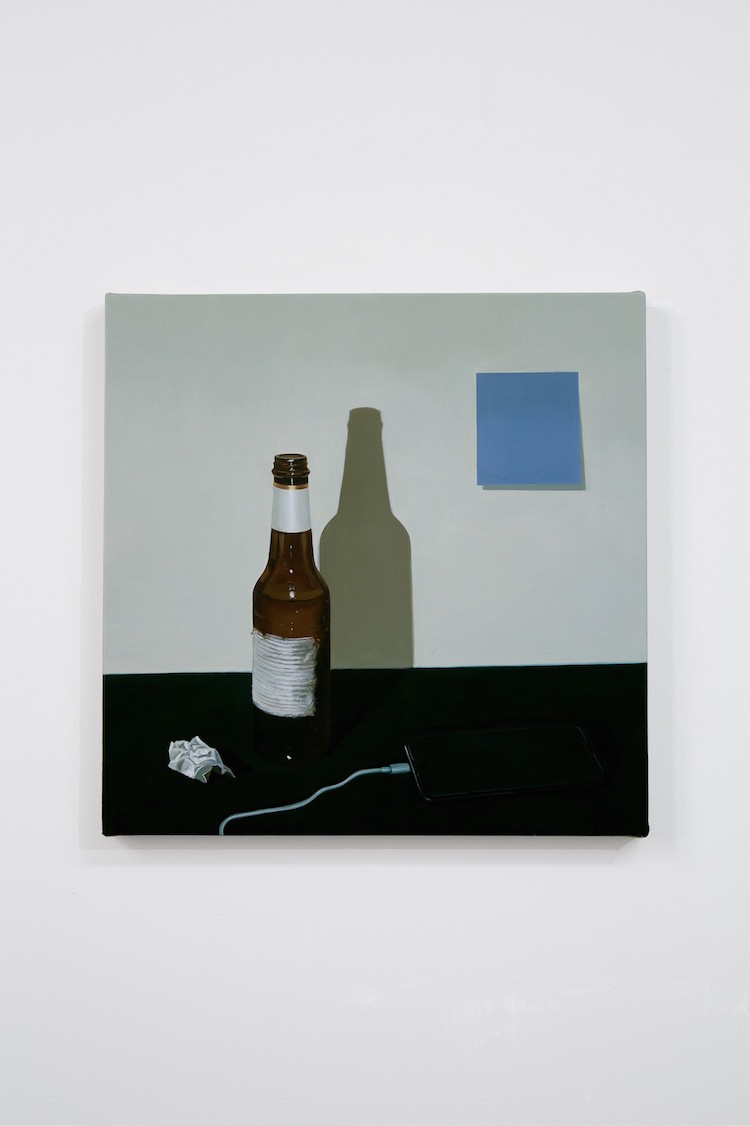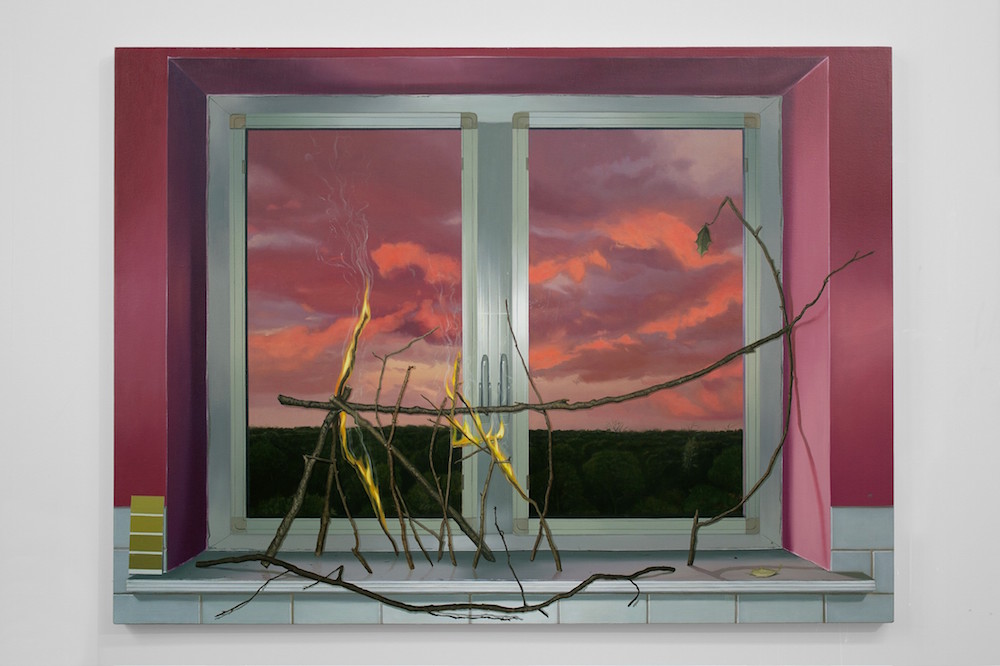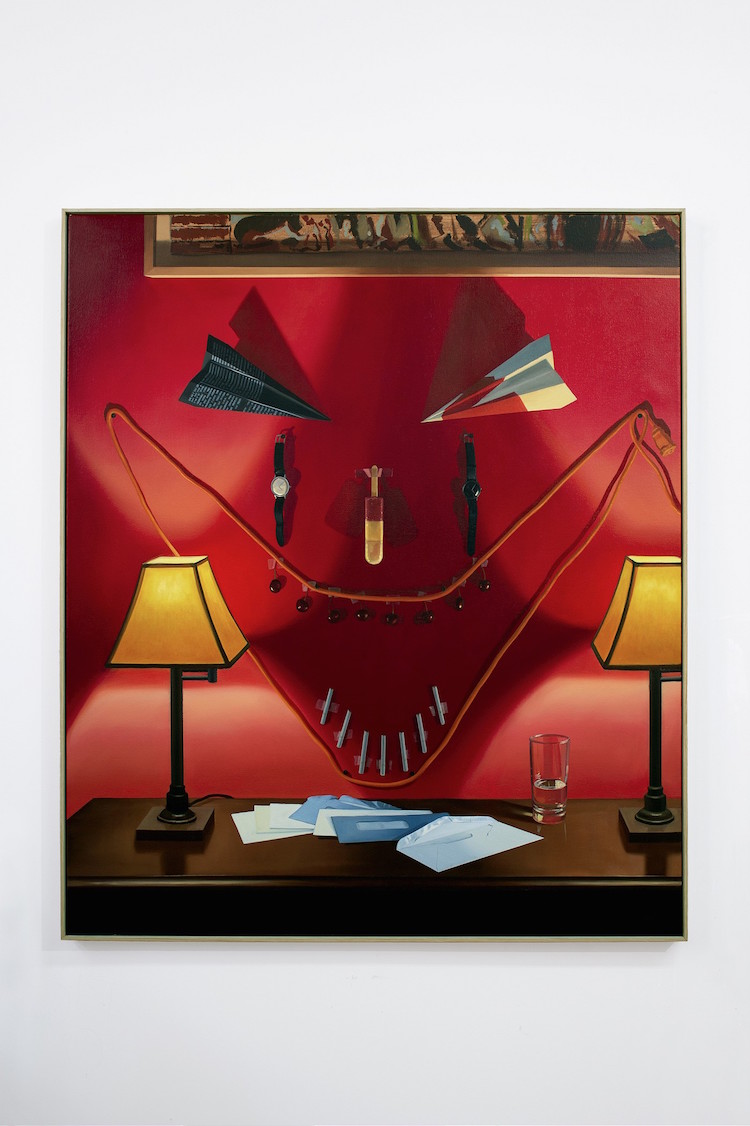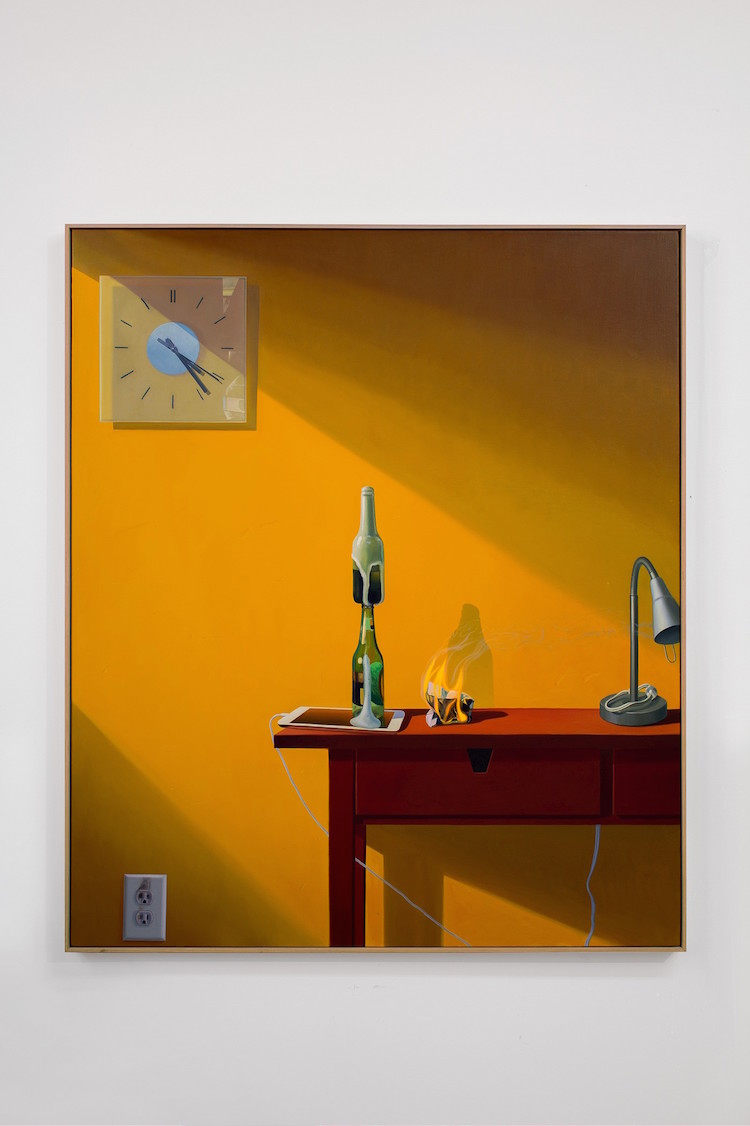After some standout solo presentations stateside, notably with Jack Barrett in New York and Smart Objects in LA, Paul Rouphail makes his international solo debut with Stems Gallery in Brussels, Belgium. Opening September 6, 2019, At Home presents the Philadelphia-based artist's enigmatic depictions of alternate domestic interior spaces and contemporary still life arrangements.
We were captured by Rouphail's paintings last year when visiting Smart Objects's booth during Miami's NADA Fair, fascinated by the corrupted and twisted interior spaces portrayed in his work. Rendered with dedicated precision and significant attention to color and atmosphere, the images play with the difference between recognition and understanding by using the familiar setting of a domestic interior. Exclusively working in areas he knows, Rouphail reinvents space through a process of modification, transforming the setting into a bizarre and often potentially vicious narrative. Rouphail cleverly utilizes a trompe-l'oeil painting technique to create a series of surrealist still-lifes where everyday items form face-like assemblages.
Curious to learn more, we reached out to Rouphail and talked more about his upcoming show and feelings about showing in Magritte's hometown.

Sasha Bogojev: What inspires the arrangements you portray, and how do you create a reference image?
Paul Rouphail: In a statement written for the show, I mention the words of American environmental philosopher John Dewey and his book Art as Experience, where he writes, “Art is a construction in time, not an instantaneous emission." It means the expression of self in and through a medium, constituting the work of art as a prolonged interaction of something issuing from the self with objective conditions. A process in which both acquire a form and order they did not possess at first.
So, you're telling a story by presenting ordinary objects in an unusual context?
Of course, there are stories that come up in my studio. Big-picture narratives that consume my thoughts, like my family, life or political concerns, but these are not objectively investigated in the process of making a painting. One can say there is a mood that bends through the work, and the painting becomes a repository for my interests: familial, political or otherwise. There are familiar metaphors present too (and maybe a bit labored) like clocks, glasses, and fire. Oftentimes I think of my subjects as characters in a story. Some paintings are “portraits” of objects. Others contain a hierarchy among the objects depicted.
One painting I often seek in the Philadelphia Museum of Art is Giorgio de Chirico's The Soothsayers Recompense. The image contains a triumvirate of unlikely items: a clock, a train, and a statue of Adriane. There is a time-fullness, an epochal time, that flows through these elements in the painting, as if the image, like Adriane, is locked in a perpetual state of waiting— for either consummation with a viewer, or for a cultural moment when the painting's metaphors become absolutely legible. This is likely impossible, of course.
I am intrigued by this intimate approach to painting, and I think that interest is borne into the works currently at Stems Gallery.

Is the goal of your work to challenge perceptions of reality or something else?
I simply want people to see my work as something strangely familiar to them, something they recognize in and of themselves. The author Amitav Ghosh writes, “To recognize is by no means to understand that which meets the eye... The knowledge that results from recognition, then, is not of the same kind as the discovery of something new: it arises rather from the renewed reckoning with a potentiality that lies within oneself.”
Several months ago, I started a painting that is now in the show at Stems. It depicts a windowsill replete with flaming twigs. Through the glass, there is an interminably dark forest and an alizarin sky. A friend recently suggested that the painting makes reference to the recent fires ravaging the Amazon. I thought this was interesting considering that I made the piece months before the news broke. This kind of recognition engages what is essential to human nature, which is to uncover meaning when confronted with abstraction. That's the challenge for me: Is it possible to make a painting of say, two whiskey tumblers, and cigarette, that reminds one of one's family, or of one's self, or of the changing climate? At the very least, the paintings are autobiographical, though I hope the viewer sees them as not merely that.
Did you ever think of a group name for your work, especially the ones arranged into face-like composition?
No, not particularly. When asked what kind of paintings I make, I usually respond: “still-lives.” The face-like paintings I merely call “face-paintings.” Only a few years ago I was making trompe l'oeil paintings, and before that, I was making large paintings about cities and architecture, so I tend not to limit my bodies of work by giving them definitive conceptual titles.

How does it feel to have a solo show outside the US?
I am very proud to be having my first European solo exhibition with Stems Gallery in Brussels. They have an outstanding program and a beautiful exhibition space. I am also intrigued by Brussels as a city as it's the de facto capital of the European Union. I feel this is a very interesting time to be exhibiting in this city
How much of an influence is René Magritte for you?
Magritte is essential to the still-life in the twentieth and twenty-first centuries, like the Albers' are to abstraction, or Carolee Schneemann is to performance art, for example. There are elements in Magritte's work, like the landscapes in Empire of Light or the objects in The Graduation of Fire, that are referenced in my own paintings. I am especially fond of his enigmatic painting, La voix du sang (1960) which is both terrifying and melancholic. The fluency and veracity of his pictorial language in that painting I find enthralling.
Along with Magritte, I am indebted to artists like Edward Hopper, Horace Pippin, Stephen Shore, Paul Sietsema, Lisa Yuskavage, among many others. Equally, the music of composers Steve Reich and John Adams have had a profound impact on my paintings.
Paul Rouphail's At Home opens at Stems Gallery on September 6th and is on view through October 26, 2019.

